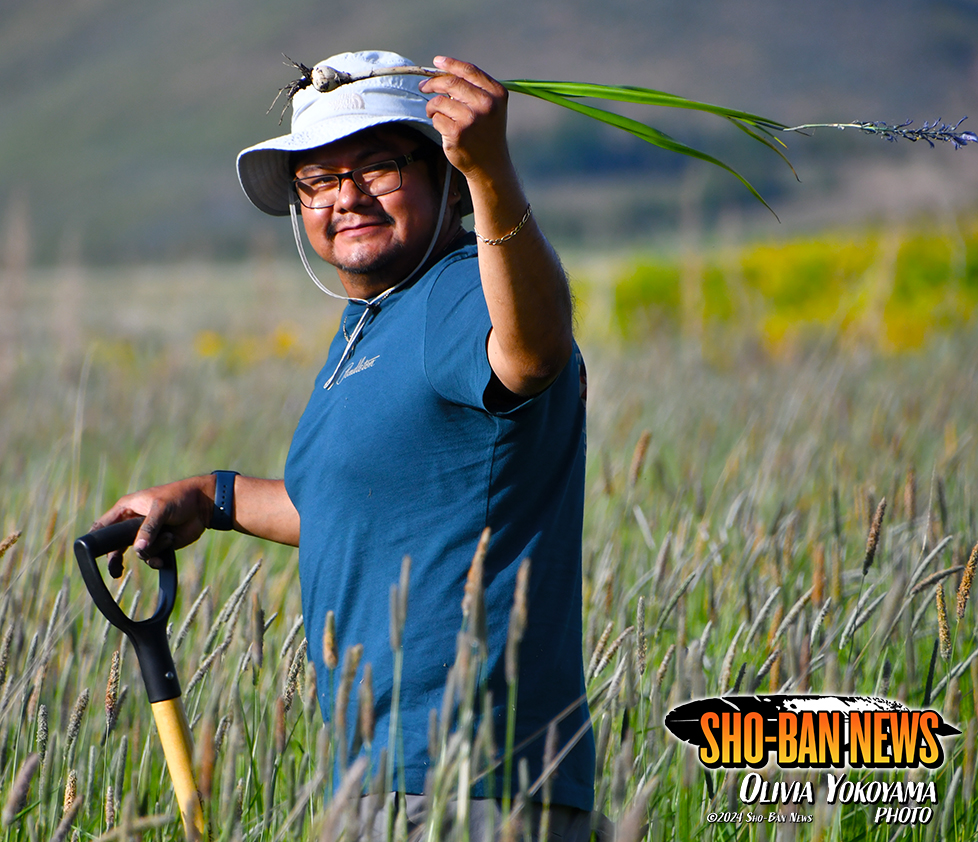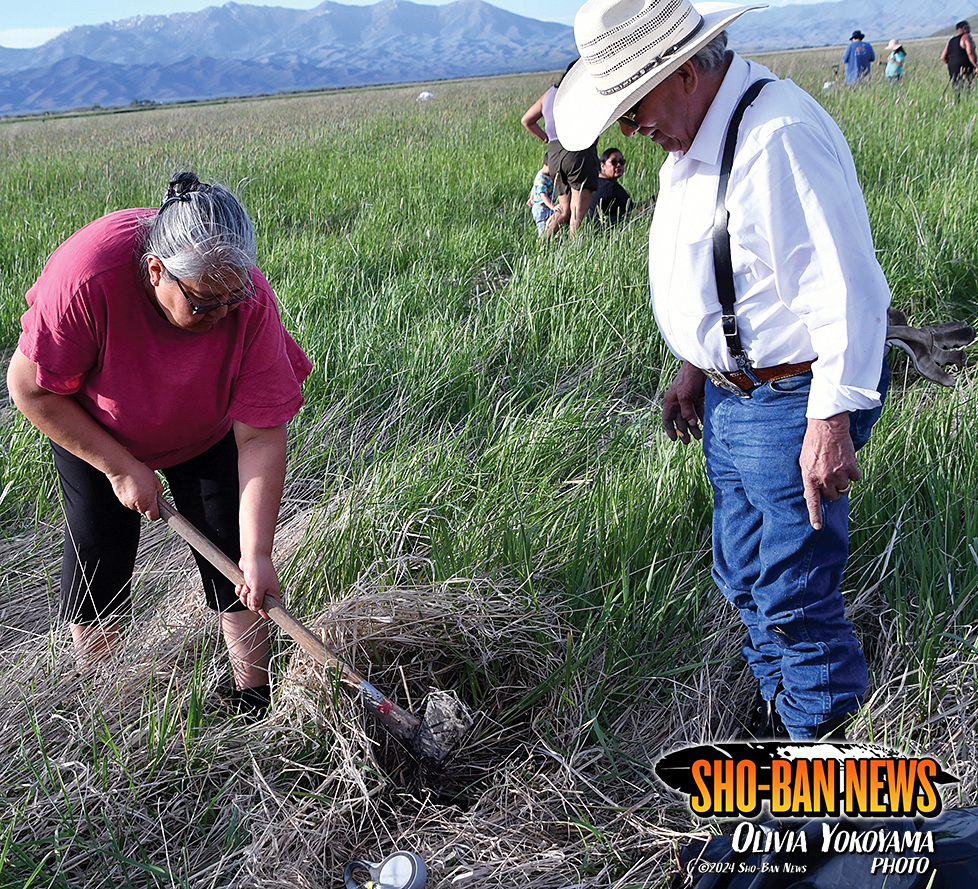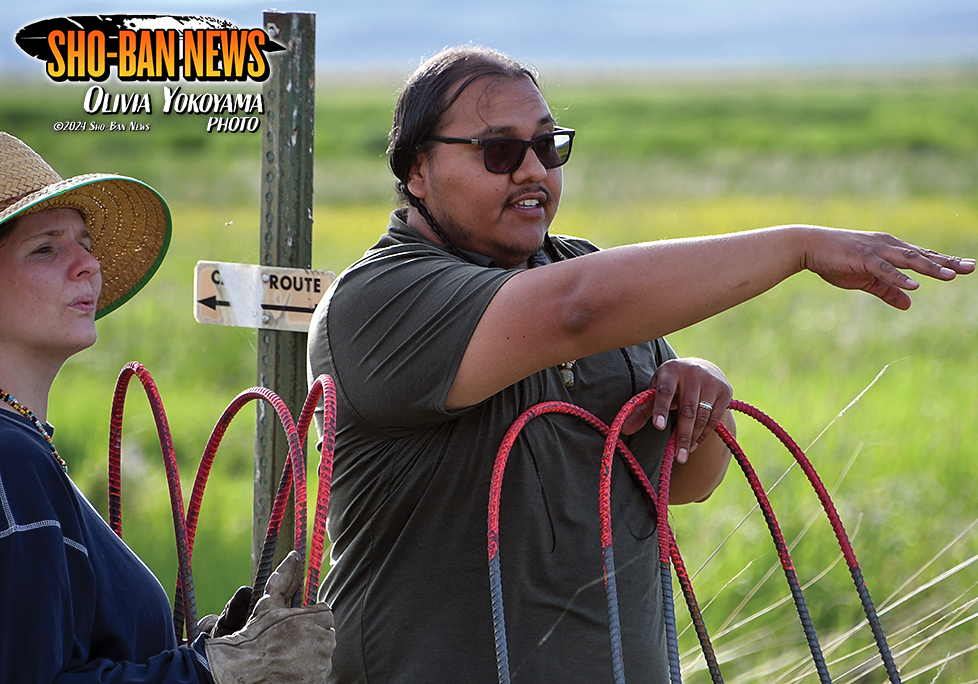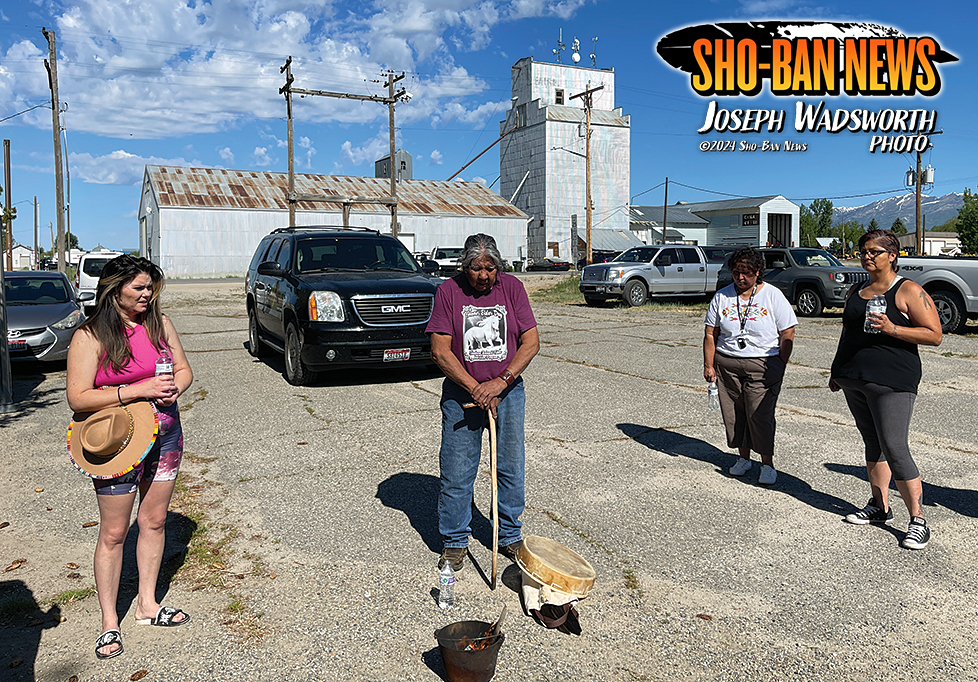Participants take part in Camas Prairie Homecoming

Aaron Auck shows a harvested camas bulb.
By OLIVIA YOKOYAMA
Sho-Ban News
FAIRFIELD — The Shoshone-Bannock Tribes hosted the annual Camas Prairie Homecoming in Fairfield on June 7-8 where the camas harvest began and an introduction at the Camas Prairie Centennial Marsh.
Bailey Dann and Nolan Brown of the Language and Culture Program Original Territories office, described how the camas is being invaded and suffocated by the invasive grasses. When the gathering began Dann said, “These are our homelands that we came to for thousands of years and our ancestors were here and hear us, and the plants hear us so it is to have those good thoughts when we’re out there.”
Nolan Brown urged attendees to grab the camas bulb and once that bulb is removed, the purple flower would be replanted back into the ground in hopes for transplant.
Bobette Wildcat-Haskett who has attended for many years and very active in having her family participate and continuing their culture passing it on to her daughter Taylor Haskett who also gathered bulbs and removed the grass.
The reason for being active at the Camas Prairie is to restore the area to help the camas thrive. Different departments throughout the Tribes and Idaho State are working together to resolve the invasive grass.

Wendy Galloway rakes up the invasive grass as Sam Galloway observes.
Christina Stucker-Gassi, Program Manager for a non-profit organization NCAP (Northwest Center for Alternative to Pesticide) and Donna Delparte who works with Idaho State University took data from a drone to get data points of observation. It showed a mass of Garrisons foxtail throughout the prairie. The purpose is to acquire an idea of what the grass to use the data to identify the Garrisons across the valley. The Multi Spectra imagery can tell what kind of plant it is and what the plants distinct characteristics are. The Garrison Creeping Foxtail is an aggressive plant that creates a mat that is difficult for other plants. Stucker-Gassi said “When I pulled the Garrisons out from the ground, there was a camas bulb that is being suffocated underneath the mat and therefore it cannot get through to grow.”

Nolan Brown and Christina Stucker-Gassi observe Camas Prairie.
In 1963, USDA research found Garrisons plant was brought by the settlers and introduced to the land. Another plant that is an issue is Reeds Canary that is problematic but will gain control eventually. Christina said, “It is beyond wrong and great injustice that the Camas Prairie wasn’t managed even though it was included in the Fort Bridger Treaty but was not upheld. I hope that everyone can work together and manage this issue and see it as a lesson to everyone.”
Stucker-Gassi has been working NCAP for a decade and is working with Sydney Fellows to find a solution about the grass. If the invasive grasses accumulate then it will soon be a wasteland. Therefore grass will be over powered and will create a wall and a mono culture degraded grass and no other wild flowers would essentially be lost.”
In the near future, LCPD hopes to remove the grass so the land and culture will not vanish.
Stucker-Gassi has seen some camas across the northwest but it is decreasing because of the invasive plant but she’s here to help and wants to keep the land healthy and alive to help out help out for as long as she can.

Tribal elder Farrell Wildcat Sr. speaks before he offers the prayer for the event.
Theresa Bache who works for the Language and Culture Preservation Department has attended since 2016 and noticed the decreased in camas each year.” It was a great turnout this year, unfortunately it is not as pretty as it used to be.” Bache said. “The camas is so far and spaced out and now further away from each other.” She would like to see more participation from the abled body to help and look at the Camas Prairie and see what it has become and make it a point to travel to the area.”
Aaron Auck, Waapi Kahni Recovery coach, attended for the first time to receive a hands on experience to see what the culture used to be like. He brought his wife and son to give them the experience and be connected, and hope to continue visiting the landmark.
Auck has several years in sobriety — clarity in sobriety is much more clear to feel a better connection with the land. “My favorite part was the hands on-pulling out the camas bulb, cleaning it off and removing the foxtails, and helping repair the weeds from the camas area so that way it can come back.”
The gathering lasted until dusk. A morning prayer was led by tribal elder Farrell Wildcat and assisted by Sam Galloway. After the prayer, participants were invited to the Camas Lily Days where the Language and Culture Preservation Department had a barbecue while other participants had the option to gather more camas and bond with other families that participated in the harvest.





